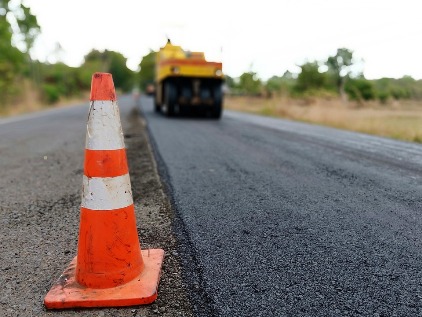Debt has ballooned almost seven-fold over the past five years by the road builders. Hence, the Prime Minister, Narendra Modi has asked the state road builder to stop all the construction of highways. This has posed a serious obstacle on India’s path to economic recovery.
The Prime Minister’s office wrote to NHAI in a letter dated August 17 that National Highways Authority of India totally log jammed with unplanned and excessive expansion of roads. NHAI mandated to pay several times the land cost; its construction costs also shooting up. Road infrastructure has become financially unviable.
The Prime Minister’s office proposed that NHAI be transformed into a road-asset management company, according to the letter obtained by Bloomberg, and the prime minister’s office asked NHAI to reply within a week.
The decision is a
reversal from Modi’s first term, when his administration was praised for its
breakneck speed of highway construction that helped make India one of the
fastest-growing economies in the world. However this came with the burden of
escalating costs, eaving NHAI increasingly dependent on the government for
financial support at a time when government is looking to contain his budget
deficit.
Restricting road-building risks imperiling governments
target to make India a $5 trillion economy as roads are necessary for
socio-economic development, said Vikash Kumar Sharda, a partner at Infranomics
Consulting LLP, who previously consulted for PWC India. Roads are critical
infrastructure, and putting breaks on it will not only result in a slowdown of
highway construction but also of other sectors that are dependent on it.
There’s a strong
co-relation between economic growth and investments in infrastructure, with
roads accounting for about 3.1% of gross value added, Modi’s economic advisers
said in a report this year. Data due Friday will probably show India’s gross
domestic product expanded 5.7% in the quarter through June, the slowest pace in
five years.
Modi’s office now wants NHAI to revert to a
model used by his predecessor, where NHAI would auction projects to developers.
They’d construct the roads, collect toll from users and then would transfer
ownership back to NHAI after an agreed period. Weak private sector
participation pushed Modi to scrap this practice and he permitted NHAI to bear
as much as 100% of the costs in certain road projects that led to ballooning debt.
NHAI’s outstanding debt of 1.8 trillion rupees
would entail annual interest servicing of about Rs 14,000 crore, higher than
the Rs 10,000 crore NHAI collects as toll, according to analysts at SBICap
Securities Ltd.
NHAI’s debt obligations:
FY20: Rs 5,600 crore
FY21: Rs 6,600 crore
FY23: Rs 4,700 crore
This is in addition to the annual interest
costs, Rohit Natarajan, an analyst with Antique Stock Broking Ltd., wrote in a
note on Monday.
Land acquisition costs have also risen to more than Rs 2.5
crore per hectare from Rs 90 lakh after fair-price laws were introduced in
2013, and this alone accounts for more than 30% of NHAI’s expenses, according
to ICRA Ratings Ltd.
The prime minister’s office didn’t reply to an email seeking
comment and NHAI declined to comment. The letter contains only suggestions and
top-rated NHAI is fully capable of raising enough debt to keep building roads,
Nitin Gadkari, Modi’s minister for roads, was cited by the Mint newspaper as
saying on Tuesday.
Ratings company ICRA on Wednesday said the buildup of debt means NHAI must either go slow on new projects — a choice Modi can’t afford as he needs to spur economic growth — or shift to a build-operate-transfer model involving equity-purchases by private players. Many developers can’t support huge equity investments that are part of BOT projects, the rating company said.
Among the beneficiaries of this shift could be IRB Infrastructure Developers Ltd., which has traditionally focused on BOT projects where the operator collects a toll from road users.
IRB Infrastructure Chairman Virendra Mhaiskar said that the decision to switch back to BOT-toll is much needed given the fiscal constraints. In the present dispensation, given the land acquisition cost, restricting to BOT only for a year or two may be a wise idea.
Source: Economic Times


